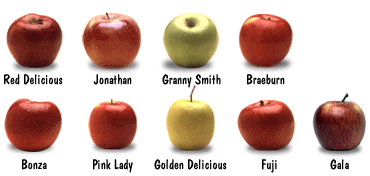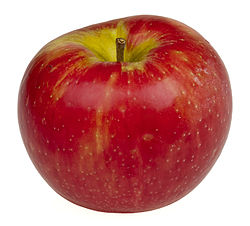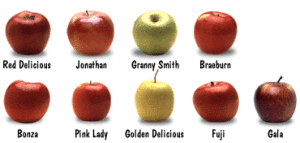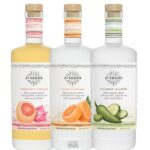Everyone who knows me is keenly aware of my apple obsession. Unlike my brother Mitch who is Apple® obsessed (iPhone, iPad, iEtc.), I am apple obsessed (Honeycrisp, Braeburn, Pink Lady and so on).
At a recent conference for the wine industry, I heard Mike Veseth speak. Mike is a teacher and blogger known as the Wine Economist and is the Robert G. Albertson Professor at University of Puget Sound. Mike spoke to the wine industry at the annual Unified Grape & Wine Symposium in Sacramento in January and gave a fascinating speech about the marketing of apples along with an interesting look at how the wine industry is moving in the direction of the bulk fruit juice market as wine is moved around the world in bulk. Mike’s blog has more on this topic and is filled with some great insights.
Over the past three years, I have become obsessed with the apple brand called Honeycrisp. I think they are the perfect apple. Crisp, just enough balance of sweet and tartness, juicy and incredibly satisfying. They sell at a premium to most apples so I think of them like the Ben & Jerry’s of the apple world. Developed at Minnesota Agricultural Experiment Station Horticultural Research Center, this is as important an accomplishment as the iPad.
My fascination with Honeycrisps goes beyond my appetite. The apple industry has successfully taken a commodity (the apple) and turned it into a premium priced superstar with superior engineering to meet a market need. And they have branded it well and also done a good job managing availability.
In a world where everything is always available, some scarcity for products
is not a bad thing at all.
This hybrid of Macoun and Honeygold is not a genetic mutation but uses the science of natural breeding to create this gem. Often selling at 20% above the market price for all other apples, this variety has the distinction of creating a growing tribe of followers who have spread the word via social meeting and plain old word of mouth.
But it all starts with a superior natural product that didn’t try to hype itself with an artificial advertising campaign. They just made a fabulous product and priced it at a premium to position it as special. I’m sure it is more expensive to cultivate but price played a critically important role in defining value. 

What can the wine industry learn from the Honeycrisp’s experience? Is it possible to develop high-end proprietary types of cabernet sauvignon that goes beyond old vine distinction? What other lessons can be learned about the marketing and pricing approach to differentiate the Honeycrisp from its more pedestrian cousins?
Look Outside of Your Category
The marketing lesson in this is clear.
What can you learn from other categories in marketing your own products and services? How can you add extra value in the development of your product that allows you a chance at super premium pricing in a commodity business? Are you developing me too apples? Are you investing in something that is not only different but can carry a premium price because it meets an unmet market need?
Is your product innovation blending into the category or truly standing out from the crowd. If you haven’t read this book, stop what you are doing and go buy it and read it twice. Different by Youngme Moon.
What can you learn from other categories in marketing your own products and services? How can you add extra value in the development of your product that allows you a chance at super premium pricing in a commodity business? Are you developing me too apples? Are you investing in something that is not only different but can carry a premium price because it meets an unmet market need?
Is your product innovation blending into the category or truly standing out from the crowd. If you haven’t read this book, stop what you are doing and go buy it and read it twice. Different by Youngme Moon.
If you work in product development, avoid the “me-too” commodity approach and do something with a crisp difference. This is a core belief I have about marketing things like apples, oranges and widgets.





